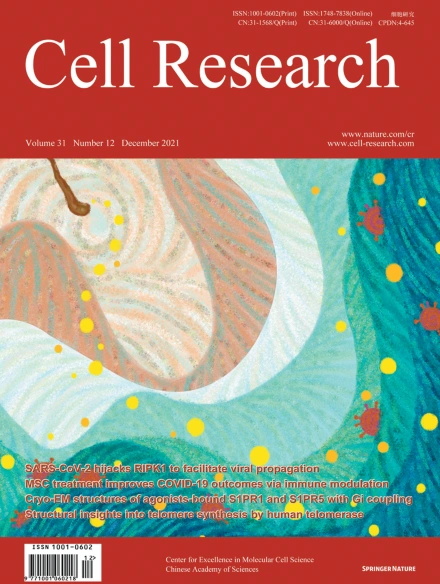
Advanced Search
Submit Manuscript
Advanced Search
Submit Manuscript
Volume 31, No 12, Dec 2021
ISSN: 1001-0602
EISSN: 1748-7838 2018
impact factor 17.848*
(Clarivate Analytics, 2019)
Volume 31 Issue 12, December 2021: 1308-1310 |
The ChinaMAP reference panel for the accurate genotype imputation in Chinese populations
Lin Li1,2,† , Peide Huang3,† , Xiaohui Sun2,† , Siyu Wang2,† , Min Xu1 , Sha Liu1 , Zhimin Feng1 , Qing Zhang1,2 , Xiaoji Wang4 , Xiaole Zheng3 , Mengyao Dai2 , Yufang Bi1 , Guang Ning1,2 , Yanan Cao1,2,* , Weiqing Wang1,*
1Department of Endocrine and Metabolic Diseases, Shanghai Institute of Endocrine and Metabolic Diseases, National Clinical Research Centre for Metabolic Diseases, Key Laboratory for Endocrine and Metabolic Diseases of the National Health Commission, State Key Laboratory of Medical Genomics, Ruijin Hospital, Shanghai Jiao Tong University School of Medicine, Shanghai, ChinaDear Editor,
The genotype imputation is an efficient and pivotal approach to estimate the unobserved genotypes in the genomic data from the single nucleotide polymorphism (SNP) genotyping arrays or whole-genome sequencing (WGS). The fine mapping of variants in the genome-wide association study (GWAS) could be critically improved by the imputation with an optimal reference panel based on the population-specific haplotypes.1 The significant progresses of imputation were recently achieved by large high-resolution reference panels, such as the 1KGP3 (1000 Genomes Project Phase 3, n = 2504),2 the UK10K (10,000 UK Genome Sequences, n = 3781),3 the HRC (Haplotype Reference Consortium, n = 32,470),4 TOPMed (Trans-Omics for Precision Medicine, n = 97,256)5 and the GAsP (The GenomeAsia 100 K Project, n = 1654)6 (Supplementary information, Table S1). The multi-ethnic 1KGP3 reference panel is most commonly used for the genetic studies of Asian populations. However, the European ancestry-dominant reference panels exhibited poor performance in the genotype imputation for Chinese and other East Asian populations.7,8,9 The number of well-imputed variants and imputation accuracy depend on the characteristics of the reference panel dataset, including the sample size, sequencing data quality and population composition. The limited Chinese samples restrict the imputation quality with current reference panels in Chinese population studies. Additionally, the insufficient sequencing depth of construction datasets could undermine the detection capacity of rare variants for the imputation. Therefore, a population-specific reference panel constructed by a large-scale, in-depth WGS dataset of Chinese populations could be essential for the accurate and comprehensive imputation of the genotyping array and sequencing data from Chinese individuals.9,10
https://doi.org/10.1038/s41422-021-00564-z